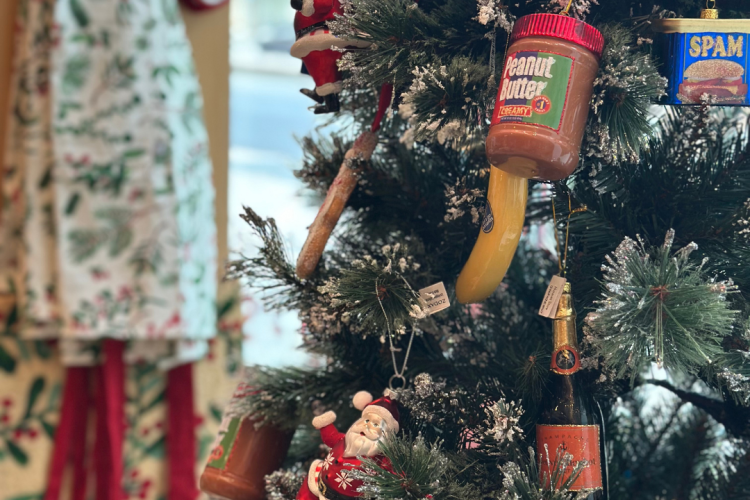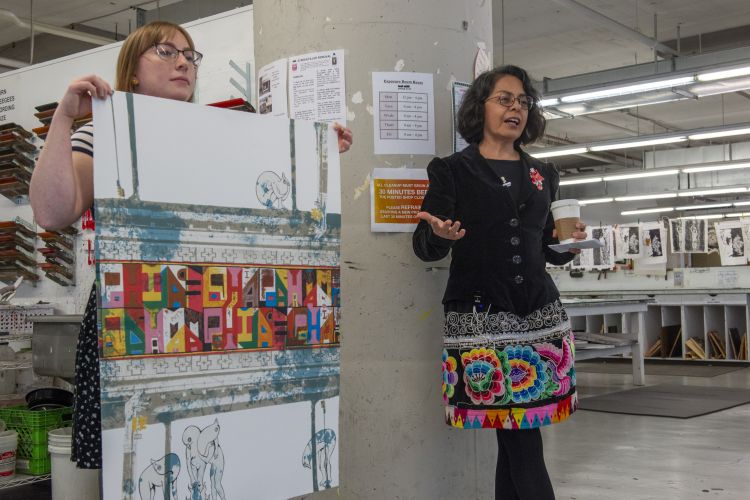STORIES FROM PAFA
A History of PAFA's Cast Hall by Faculty Member Al Gury
In summer 2017, PAFA faculty member and painting department chair Al Gury wrote a guest blog post for the Victoria and Lalbert Museum on PAFA's historic Cast Hall and specifically, the cast of Michelangelo's David. Read the fascinating story below!
In 1805, a group of men in Philadelphia founded what is now America’s first and oldest art museum and art school, the Pennsylvania Academy of the Fine Arts (PAFA). Their first action, even before having a beautiful neoclassic building constructed to house the new institution, was to purchase fine plaster casts of famous Greco-Roman and Italian Renaissance statues from France. Many were commissioned from the plaster caster for the new Louvre Museum. Sadly, most of these early cast purchases were destroyed in a fire in 1845, but were replaced throughout the 19th and early 20th century. Drawing from the Antique, one of the first courses established in America’s new Academy of Art, remains a core foundation course in PAFA’s undergraduate BFA college curriculum today.

PAFA’s Cast Hall
Today, PAFA is a leader in exhibiting and collecting contemporary and historic American art and in the education of 21st-century fine arts students. PAFA contains one of the largest collections of American art in the world and provides top BFA and MFA degree and related programs to students.
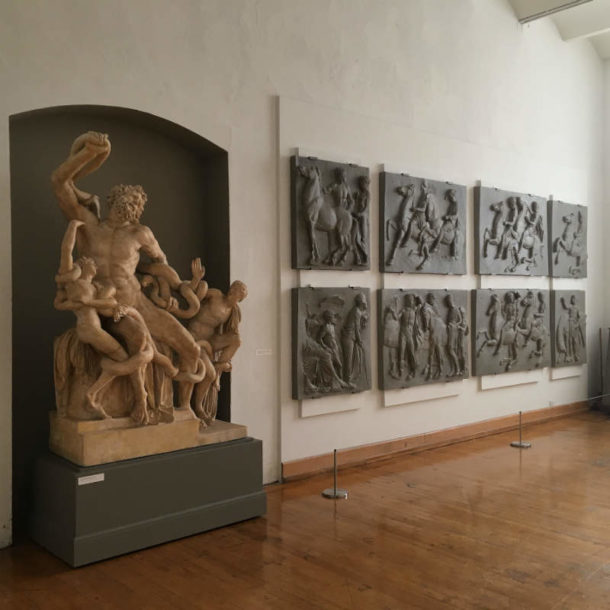
Laocoon and Parthenon reliefs
Over 120 fine and rare plaster casts grace the Cast Hall of PAFA. The current Cast Hall is a component of the Historic Landmark Building at PAFA, the third building to house the institution, built by the firm of Furness-Hewitt and opened in 1876 for the American Centennial. Additional studio, classroom, digital, gallery and other educational and research facilities located in the adjacent the Samuel M.V. Hamilton Building, form a unique, urban art school/museum campus.
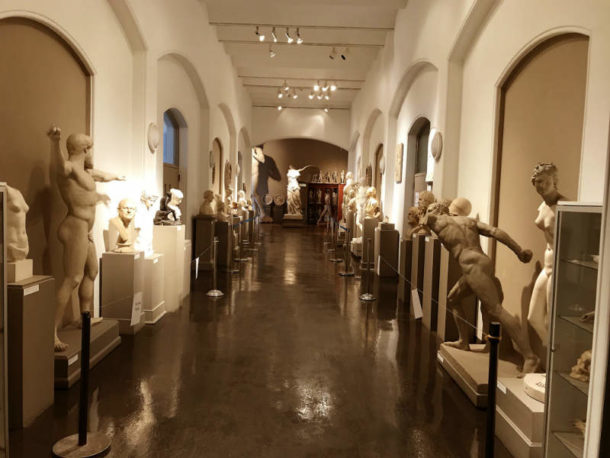
PAFA’s Cast Hall
Carefully restored, cared for and added to, the cast collection at PAFA is one of the few great collections in the United States. The objects in the collection are superior in craftsmanship, often being first castings from the original sculptures, and are now very rare.
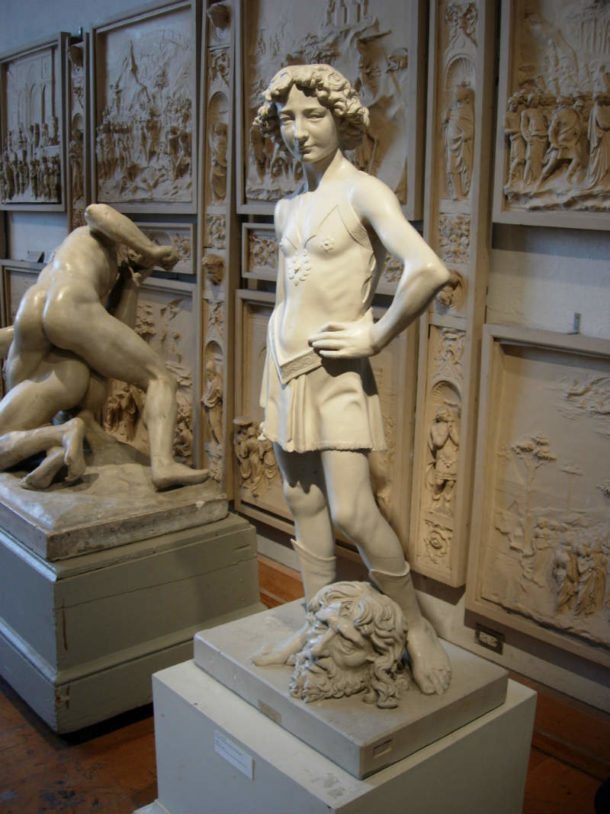
Verrocchio’s David at PAFA
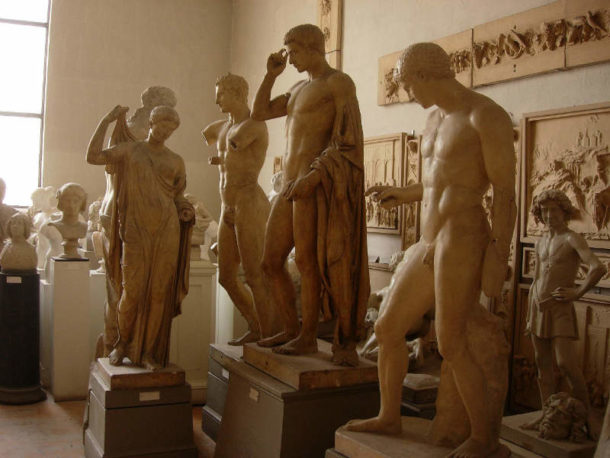
Casts gathered for evaluation and restoration at PAFA
Sister institutions in the United States such as the Slater Museum and Yale University, both in Connecticut, also own fine cast collections. The cast collection at PAFA has been the subject of much research and information sharing between scholars, curators and institutions such as the University of Pennsylvania, the Philadelphia Museum of Art and the Royal Academy in London. PAFA’s cast of the Laocoon was recently on loan to the Philadelphia Museum of Art for the 2015 exhibition entitled The Wrath of the Gods: Masterpieces by Michelangelo, Rubens and Titian. As part of PAFA’s ongoing contemporary museum exhibition program, the cast of the David presided over the groundbreaking performance in the cast hall by the contemporary multimedia artist Cassils, entitled "Becoming an Image," during their exhibition Melt/Carve/Forge: Embodied Sculptures by Cassils, in 2016-2017.
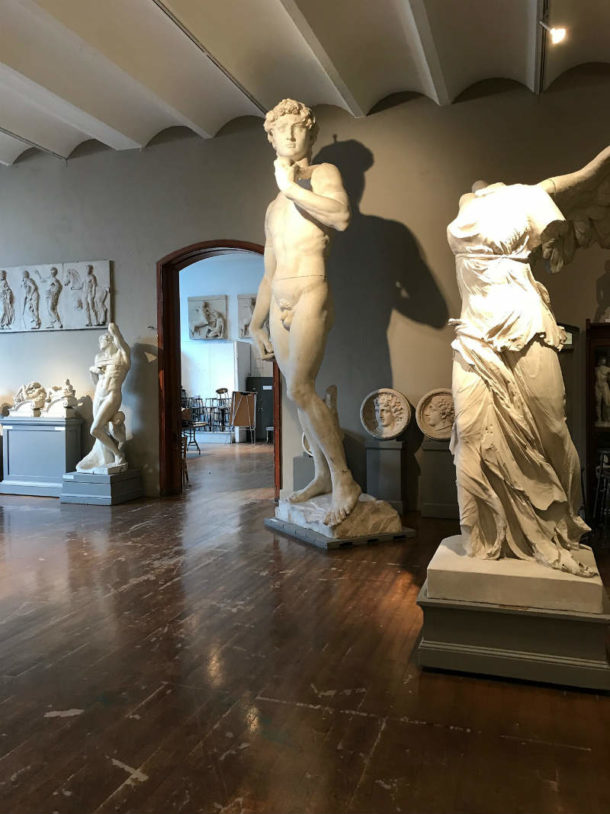
David and the Winged Victory in PAFA’s Cast Hall
A centerpiece of the collection is Michelangelo’s David. The approximately 17 foot tall exact replica of the original unveiled in Florence in 1504, was a gift to PAFA in 1988. Originally commissioned by the John Wanamaker department store in Philadelphia, the cast was intended to be the focal point of an Italian products exposition at the store. Never used because of its immense weight of over 3,000 lbs., the statue was too heavy for the store’s floor. The source of the cast is unknown at this time, but it most likely originated in Italy. The beautiful cast was stored in pieces in the department store’s basement until it was offered to PAFA. Today, David towers over the other casts in the collection at PAFA such as the Winged Victory, the Venus de Milo, the Belvedere Torso, Ghiberti’s Doors, the Laocoon and dozens of others.
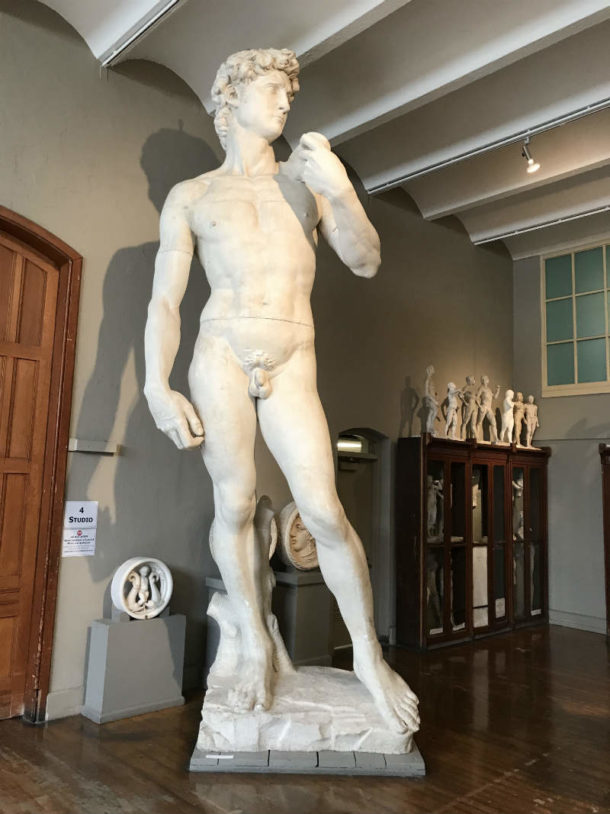
The David cast at PAFA was recently evaluated and conserved, as was the whole collection, by the Giust Gallery in Boston. Originally named Caproni, the firm has been providing fine casts and cast restoration since the end of the 19th century. Many of the casts in the PAFA collection bear the Caproni cartouche.
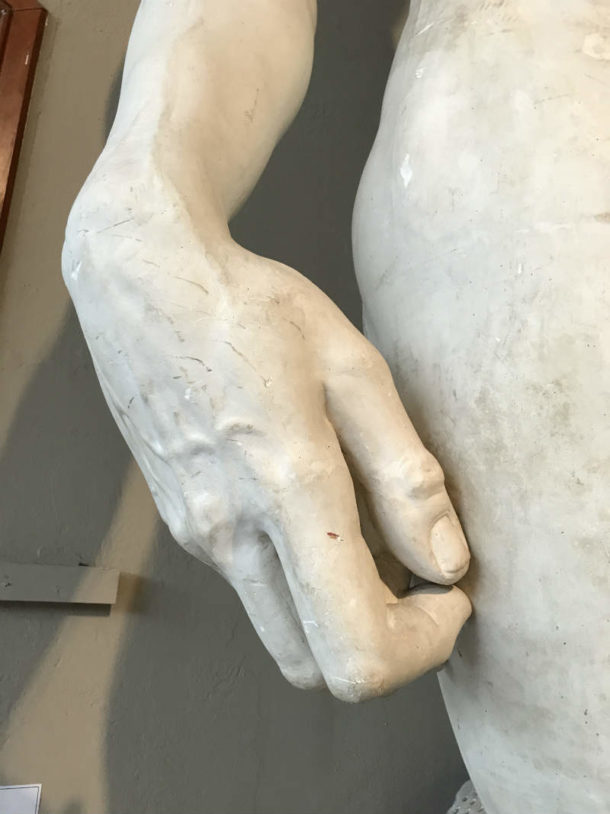
PAFA’s cast of the David is assembled in several sections, lower body, upper body and arms, all held in place by roman pins, an interlocking system of plaster keys and iron rods. Internal, embedded iron rods support the large masses of plaster and provide additional stability. Never having been moved since its installation, little damage has occurred.
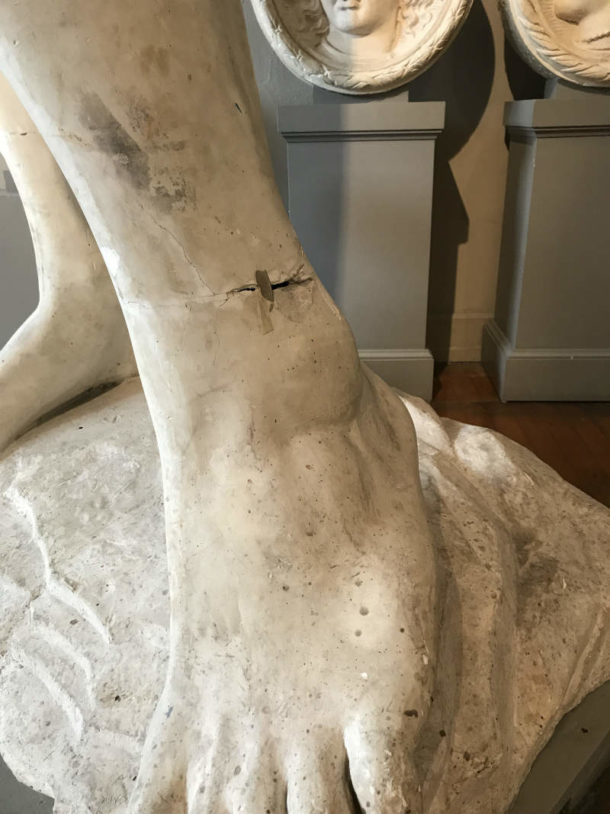
The cast’s surface color is a pale off white created by an original pale and thin, painted patina of shellac and pigment. Many antique casts were coated with shellac or paint, and restoration often involves removing layers of dirt and modern paints inappropriately applied to casts. Age has given pleasing warmth to the David’s patina. Expert structural and surface evaluation deemed the cast and its patina stable and in excellent condition.
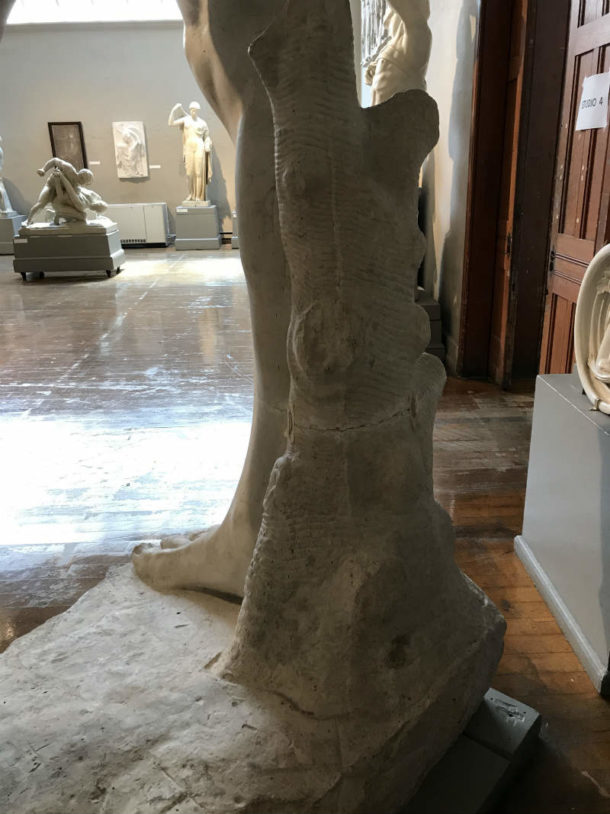
Notably, excellent casts of the giant figure grace the collections of the Victoria and Albert Museum in London, the Belgian Royal Museums of Art and Art History in Brussels, and the Pushkin State Museum of Fine Arts in Moscow. Apart from the V&A David, which was created by Clemente Papi in Italy, the source of the other two casts is unknown, but they were probably made in Italy, like PAFA’s David.
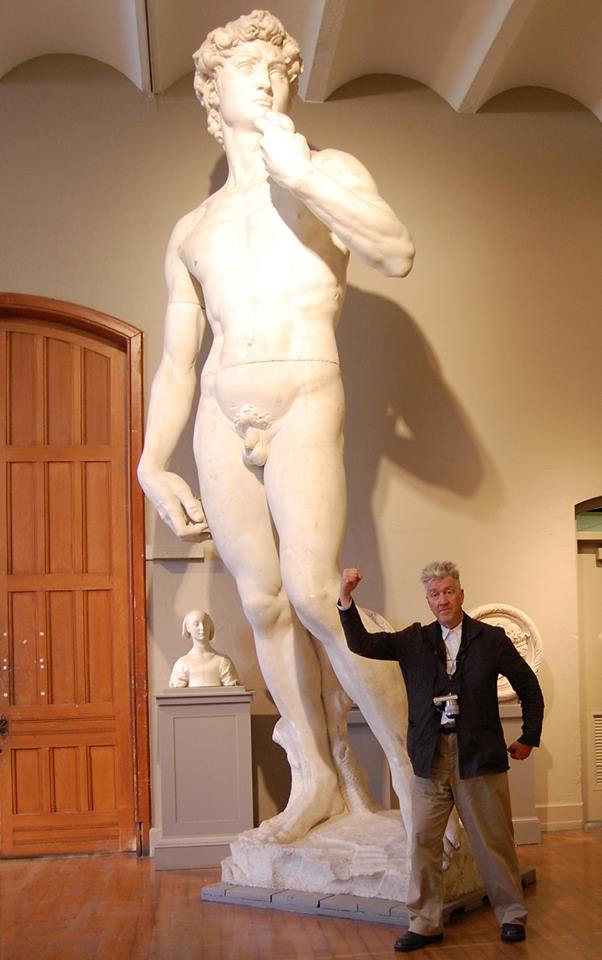
David Lynch posing next to Michelangelo’s David
Not surprisingly, items in the collection are sources of inspiration for contemporary U.S. art students and artists. Filmmaker David Lynch, an alumnus of PAFA in the 1960s, recently posed next to PAFA’s David for photographers, though his studies at the school predate the arrival of the David cast. Contemporary PAFA undergraduate and graduate students and guests from other institutions draw from the casts, learning both traditional drawing techniques as well as how to conceptualize and organize the complex visual language and architecture of these intricate objects.
Written by Al Gury, Painting Department Chair and PAFA alumnus.
All images © Pennsylvania Academy of the Fine Arts.
We're so excited you're planning to visit PAFA!
Make time for art — visit us Thursday to Sunday.
Before reserving your tickets, please review helpful information about museum hours, accessibility, building access, and special admission programs.
If you have any questions, feel free to reach out to us at visitorservices@pafa.org — we’d love to help!
